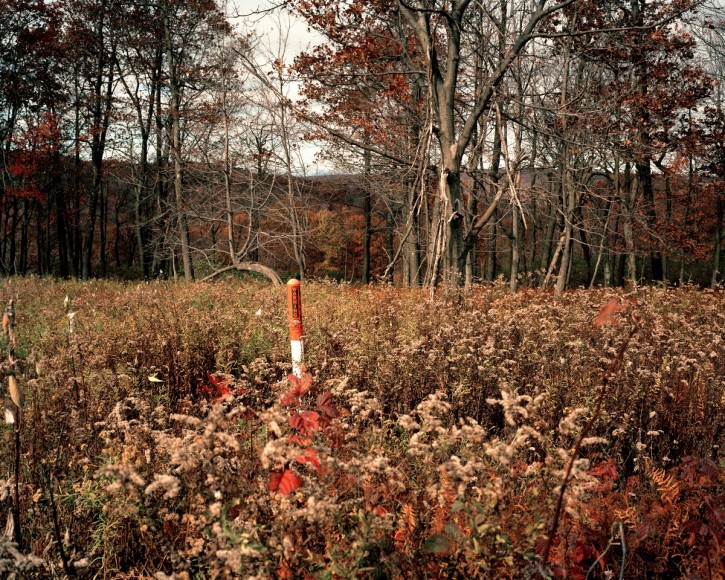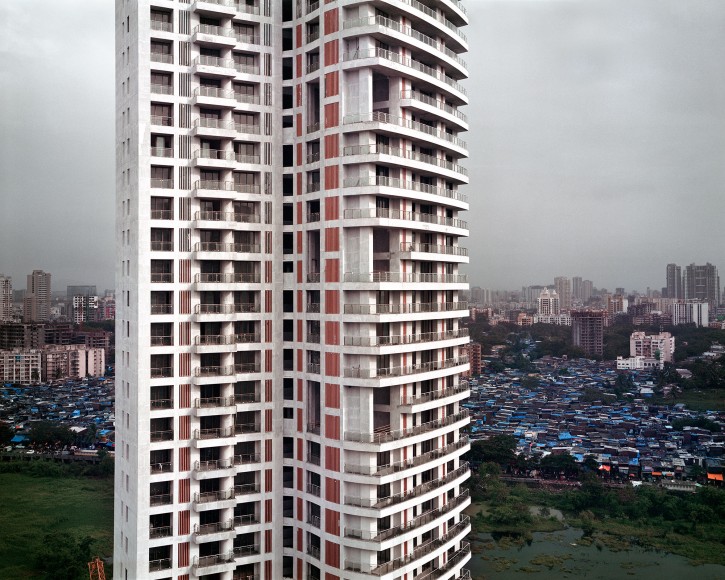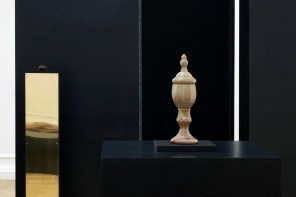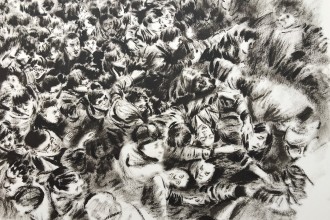As the Barbican’s photographic exhibition Constructing Worlds: Photography and Architecture in the Modern Age came to close this January, South Kiosk followed with an exhibition of new work by two contemporary artists who have documented major infrastructural developments in two separate locations across the world. Unlike Constructing Worlds, which was limited to the representation of architecture, South Kiosk’s By Set Square, Compass and Eye, raises the ecological issues associated with large-scale constructions.
Emma Charles is best known for Fragments of Machines, a work that investigates the materials that makeup the infrastructure of the Internet and the urban spaces where they are hidden. For her new project The Straightest Path Allowed by Law, Charles leaves the windowless data vaults of New York city for the Allegheny mountains in Pennsylvania, which underwent a secret $300 million construction to allow fibre-optic cables to connect New York and Chicago. Travelling the route of the cables, the artist looked for any evidence of their existence in the wilderness. Along the way, the photographs also show overhead wires, a water storage tower and a playground—relics of the city and its expansion.
Alicja Dobrucka’s series Life is on a High captures the conspicuous new high-rises in Mumbai, India. The images were taken by the artist and reproduced from local property newspapers, each named by Dobrucka after the advertising slogans used to sell them. There is a disparity between the adverts and the reality—instead of lush river meadows, the “supertalls” (one of which was marketed as one of the greenest buildings in the world) are surrounded by slums. Dobrucka adopts a perspective that draws attention to the slums but cuts the tops of the buildings to contrast with the adverts that present the sky, and ones proximity to it, as luxury.
In both artists’ work we look down at the ground to see the ways technology and architecture write upon the landscape. But to what extent do we recognize their affect? You do not need to see photographs of Mumbai’s high rises to understand how wasteful such developments are. Although Life on a High Line highlights the injustices of economic growth, Dobrucka equally illustrates how easily images can disguise the affects. Similarly, Charles shows how dramatic changes to the landscape can go unnoticed. The remnants she finds of the internet are not always obvious and while she has used the camera in Fragments of Machines to expose hidden networks, her photographs in the exhibition shows the difficulty of tracing the internet above ground.
Referring back to the title By Set Square, Compass and Eye, the emphasis in the exhibition is less on how we measure the changes around the world and more on how the eye and the camera can limit our perception of it. South Kiosk’s past exhibitions have all revolved around technology, whether new, alternative and forgotten, and the works that criticise it. Although this new exhibition seems at first to be a move away from this speciality, it investigates the problems with using a camera to document an increasingly changing world.
By Set Square, Compass and Eye is on at South Kiosk from the 16 January until the 14 February 2015.





